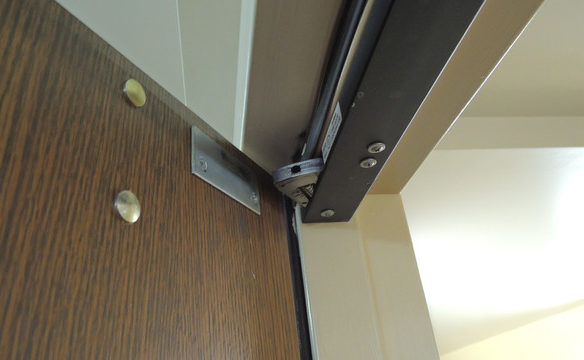 I often throw around terms that are completely familiar to those of us in the door and hardware industry, but which may sound like Greek to people who have not spent the last 35 years (eek!) talking about door hardware. It happened again yesterday when I was chatting with an architect, who stopped me to ask:
I often throw around terms that are completely familiar to those of us in the door and hardware industry, but which may sound like Greek to people who have not spent the last 35 years (eek!) talking about door hardware. It happened again yesterday when I was chatting with an architect, who stopped me to ask:
When does a door opening need a coordinator – and what IS a coordinator, anyway??
Great question. I remember that in the early years of my career I couldn’t figure out what a door coordinator was used for or how it worked. It think coordinators are still mysterious to a lot of people because finding a pair of doors with automatic flush bolts and a coordinator with all of the components functioning properly is a rare and beautiful thing.
So when does a door need a coordinator?
- Coordinators are only used on pairs of doors – not on single doors.
- The purpose of a coordinator is to coordinate the two door leaves so they close in the proper sequence – the inactive leaf before the active leaf.
- This coordination needs to occur when the inactive leaf has automatic (or constant latching) flush bolts, or when the pair has an astragal (or rabbet) that would prevent the active leaf from closing if not sequenced properly.
- With automatic flush bolts, the inactive leaf has to close first because when the active leaf closes, it activates a trigger on the bolt which projects the bolt into the strike. If the active leaf closes first, the inactive leaf won’t close fully.
- Coordinators are not normally required for pairs of doors with panic hardware on both leaves (except for pairs with mortise X vertical rod panic hardware without an open back strike).
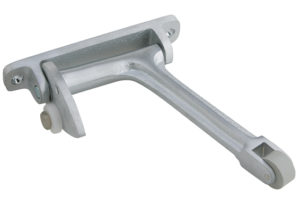
- A bar-type coordinator (photo above) mounts under the frame head, and a gravity coordinator (image right) mounts on the pull-side frame face at the frame head.
- The most common application for a coordinator is on a pair of fire doors without fire exit hardware.
There’s more information about flush bolts and coordinators in this Decoded article and in this whiteboard animation video.
If any of you are able to send me a (non-shaky) video or even some photos of a pair of doors with a coordinator illustrating how the doors close in sequence, I would be eternally grateful!
You need to login or register to bookmark/favorite this content.

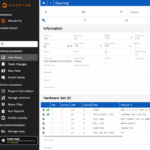

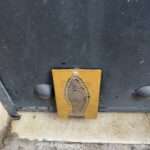
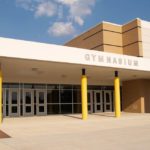
Coordinators are intended as away to make pairs of doors with one vertical rod device or an overlapping astragal close in the proper sequence and latch properly. As a practical matter, they often malfunction or require adjustment. The better solution is single point exit devices with a keyed removable mullion IMHO.
Are there exceptions to a set of double doors, on a mechanical room that has the inactive leaf properly dead bolted, not needing a acoordinator?
Hi Pete –
There is an exception in NFPA 80 (where allowed by the AHJ) which allows the inactive leaf to have manual flush bolts and no closer if the room is not normally occupied. This application would not require a coordinator. We just submitted a code change proposal that would bring this into the IBC and clarify a lot of flush bolt requirements. I’ll let you know in 2023 if we are successful. 🙂
Keep in mind that this would not apply to corridor doors in a health care facility – those are required to have positive-latching hardware. I would use constant-latching flush bolts for these doors, with no closer on the inactive leaf and no coordinator.
Here’s some more info about the NFPA 80 section: https://idighardware.com/2016/10/wwyd-manual-flush-bolts-on-fire-rated-pairs/
– Lori
You have explained it well. When I first got into the industry, the gravity type coordinator was all we had. In schools, kids yanked on them (really?) and if they didn’t outright pull them off the frame, they left them dangling and they didn’t work and actually kept the doors from closing. Thank goodness the bar type coordinator came along. It works well, it can be adjusted, kids can’t hang on it and it can be painted to match the frame. Some are available in architectural finishes as well. The bar-type coordinator and the continuous gear hinge are two of the more ingenious items that came along in my career.
While not exactly a video here is an animation of a door coordinator & Intro to Door Hardware: Ives Flush Bolts and Coordinators
03:02 of the video here –> https://youtu.be/5McQ84IxOH8
The only fault with bar coordinators is the friction between the trigger mechanism at the inactive leaf and the rub plate. This will sometimes prevent the inactive leaf from closing and subsequently preventing the active leaf from closing. The only place on a door that grease is appropriate.
The answers to the quirky questions are very informative. Good job.
I would like toe on the email list.
Thank you
Great! You can join the subscriber list here: https://us.allegion.com/en/home/landing-pages/idighardware_newsletter.html
– Lori
I am searching For hardware replacement for what I think is a top and bottom double door flush bolt With a rack and pinion gear drive. Any help is appreciated.
Hi Wayne –
If you’d like to email me a photo, I can ask my readers if they recognize it. lori.greene@allegion.com
– Lori